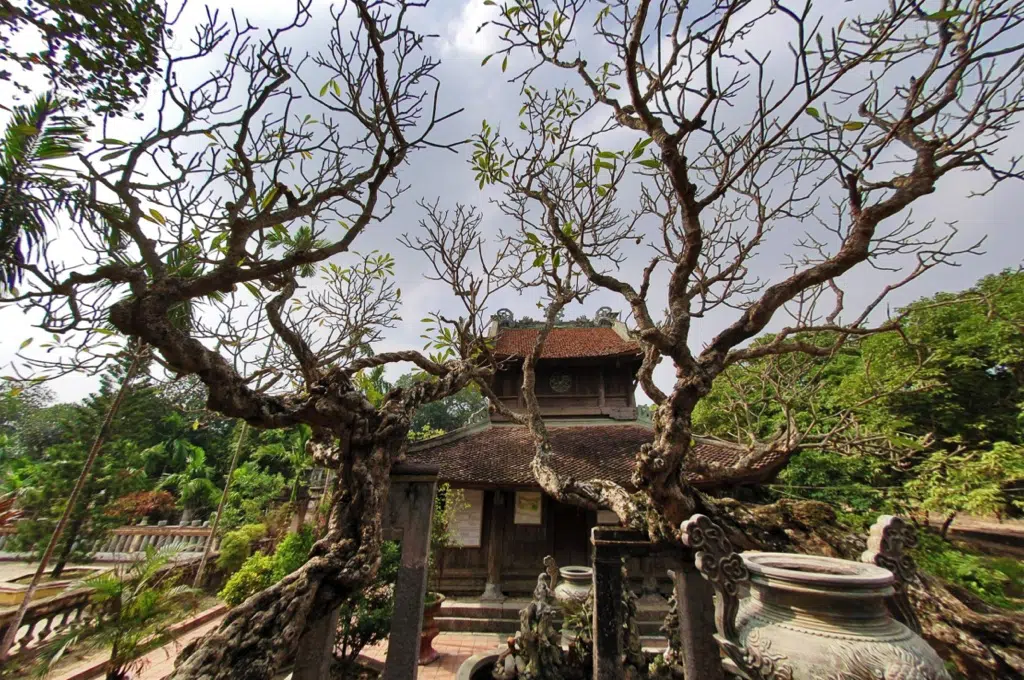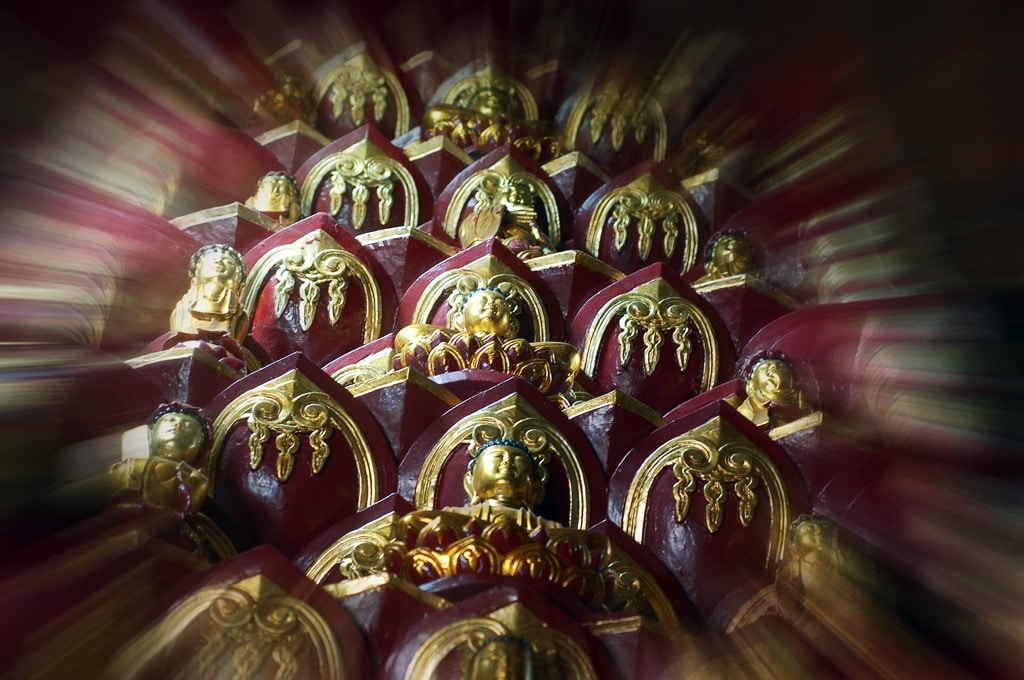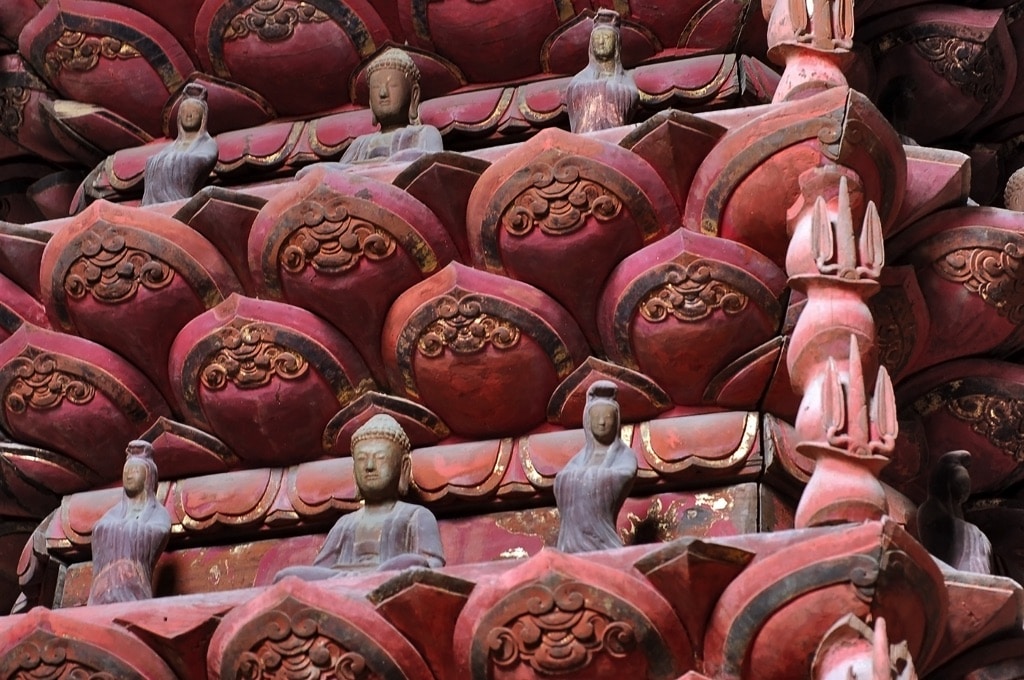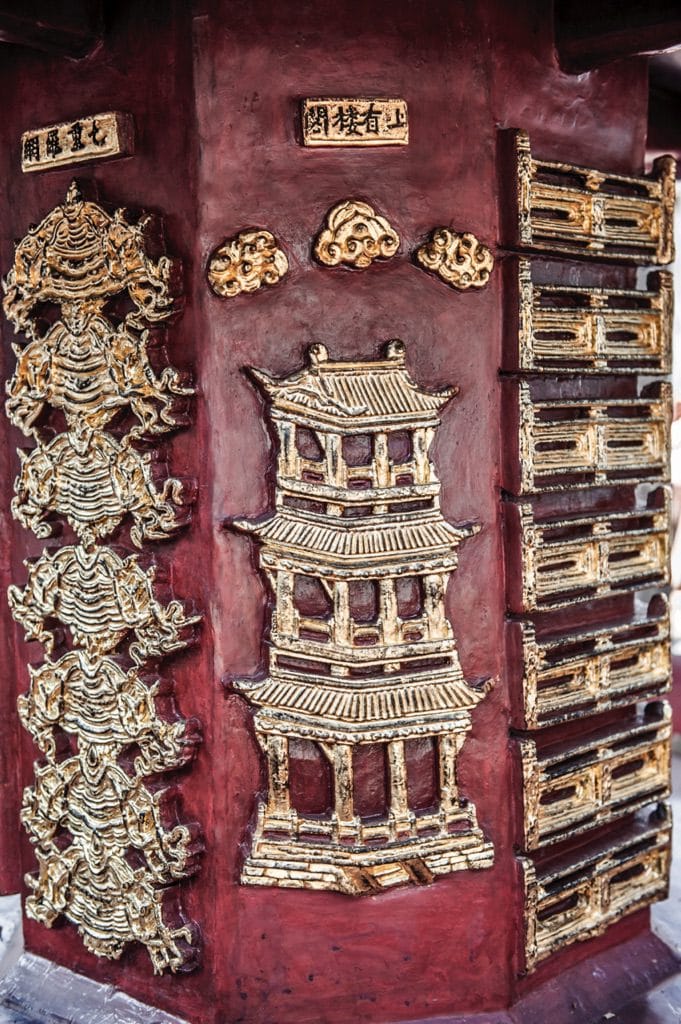Le Thao
Buddhism was adopted into Vietnam before the Christian era and includes various schools, the three most popular being Zen, Pure Land Buddhism and Tantric Buddhism. Of these three schools, Zen and Tantric Buddhism require hard labor and utmost devotion to practice to bear fruit. Pure Land Buddhism focuses on the benevolence of Buddha, and holds that dedicated Buddhists will be taken to Nirvana after they pass away. Arguably, this school requires less time, ability and skill. As a result, Pure Land Buddhism spread far and wide. Virtually all villages in North Vietnam have pagodas dedicated to this school.

Reading mantras and scriptures is aimed at the “only soul”, which means absolute concentration on a single goal. What differs are the methods. In Pure Land Buddhism, to efficiently learn Buddhist scriptures requires belief in Amitabha Buddha and Western Nirvana, which is thousands of worlds of memories away from us. To understand suffering in this life paves the way to dedicated self-correction for salvation in the Buddhist realm. These three steps enable Buddhists to enter Nirvana, and are respectively called Belief, Stoicism and Satisfaction.
Visual tools make lessons clearer for students. Northern Vietnamese pagodas boast a series of systematically arranged paintings, statues and bas-reliefs. The overview describes three worlds: hell, the mundane world and Nirvana. The central part presents the path of practice and salvation of Amitabha Buddha. All images offer a holistic Buddhist picture to help Buddhists clearly imagine the pathway ahead and reach ultimate salvation in Nirvana.

By the 17th and 18th century, a new style of architecture arose, which was the construction of nine-storied Lotus towers. These towers are either hexagonal or octagonal. Each tower has a lotus pedestal that represents the immaculate world of Buddha. Each set of three stories represents a virtue in the order of lower virtue, middle virtue and upper virtue. These virtues symbolise the achievements of Buddhists when entering the realm of Buddha.
The towers host crucial rituals performed by Buddhist monks who pray for mortal salvation in the middle of every month, particularly Lunar mid-July sacrifices (pardoning the sins of the departed). During these rituals, monks and Buddhist faithful all walk around the towers with their right hands facing the sacred statue. This practice was derived from Indian customs of presenting homage. Buddhists believe that walking around the tower three times pays sacrifice to the three Jewels; obliterates the three evils; purifies the three karmas (body, mouth and thoughts); and eradicates the three demonic forces. Each reincarnation is an encounter with the three Jewels. Walking around the tower seven times helps to eliminate seven sins (three of the body and four of the mouth) and achieve seven qualities of awakening (Bodhi). Ten rounds help to eradicate Ten fetters and obtain Ten wisdoms. One hundred rounds help to eradicate one hundred sorrows and achieve one hundred doctrines, etc. To walk around Buddhist symbols such as Amitabha Buddha statues or towers, particularly nine-storied Lotus towers, is extremely important, because as long as Buddhists practice and pay homage, their souls will concentrate on a single goal and feel inner joy. Siddhartha Gautama taught that: “to walk around a tower grants practitioners five fortunes: firstly, a fine look in the afterlife, secondly, good fame, thirdly being born in the heavenly realm, fourthly being born in a royal family, and finally salvation in Nirvana”.

Colossal nine-storied Lotus towers subsequently became symbols of Buddhism. Although their popularity was incomparable to Amitabha Buddha statues or Guanyin statues, only historically acclaimed pagodas overseen by famous head monks were able to erect these towers. Thanks to the profound practice of devoted monks, a new form of tower was launched: spinning nine-storied Lotus towers, colloquially called “Spinning mortars”. These towers were built of wood, measured eight to nine meters high, were placed in scripture halls with traditional architecture, and featured two or three layers of upcurved roof tips. Their foundations were not fixed to the ground, but placed on a bronze mortar that allowed the towers to spin. The wooden pedestals were elaborately decorated by craftsmen. Their bodies were carved with bas-reliefs that depicted Buddhist tales. The arms supporting a towers’ stories were shaped like dragon carvings. Each story was carved into a lotus pedestal. Each lotus petal carried one of multiple Buddhist statues, Guanyin statues or Alahat statues. Each statue was a lively work of art. The tower in Dong Ngo Pagoda boasts up to 162 statues.

A special feature of the “spinning mortar” is its functionality. Starting as a symbolic item, the spinning mortar is now a supporting tool for Buddhist practices. Buddhists believe that their prayers and scriptures resonate with the spins of the Lotus tower. A spin of the mortar multiplies a single prayer to 3,542 prayers. A man who committed many misdeeds during his lifetime but did not violate the five sins need only meditate upon Nirvana and murmur some prayers to Buddha, coupled with a “Nam mo Amitabha” prayer by monks and family members around a spinning Lotus tower to keep his soul from being hurled into hell. This is a miraculous and useful tool in religious life.
Nobody knows how many spinning mortars were made in Vietnam. Following centuries of historical turbulence, only three well-preserved spinning mortars remain. Dating back to the 17th century, they are found in three ancient pagodas: But Thap Pagoda in Bac Ninh, and Dong Ngo Pagoda and Giam Pagoda in Hai Duong. These flawless works of sculpture are a source of pride for Buddhists in particular and Vietnamese people in general. According to high-ranking monks who have traveled far and wide, there are no nine-storied lotus towers anywhere else in the world that function like these spinning mortars. They are a wonderful achievement of Vietnamese Buddhism.










